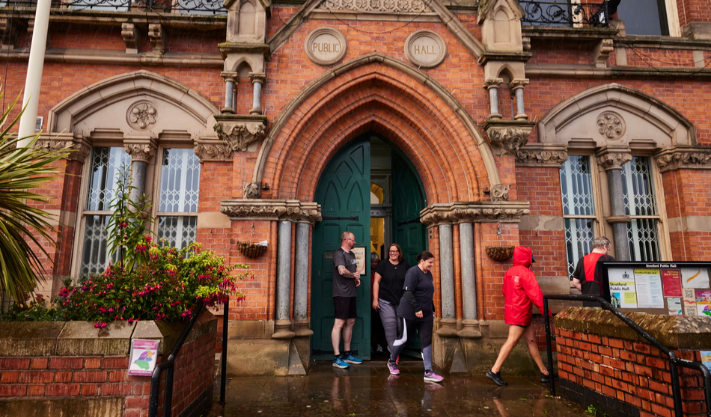A report says that the towns in the UK where riots happened last summer have experienced a breakdown in their social connections
Most of the towns where violence happened last summer have poor community ties and have been struggling with economic hardship, according to a new report.
The report, released by the charity Power to Change, uses a “social fabric index” created by the Onward think tank, which tracks the state of communities across the UK.
It found that 23 out of 27 places affected by riots last summer had much lower-than-average scores for community strength.
Areas like Hull, where a hotel for migrants was attacked and three police officers were hurt, and Middlesbrough, where a large riot caused damage to homes, cars, and public buildings, had the worst community scores in the UK.
The Social Fabric Index, produced annually since 2020, looks at factors like economic conditions (e.g., jobs), community involvement (e.g., volunteering), education, trust in government, and access to local facilities and green spaces.

A new report looked at data from an index and compared it to 27 areas that had violent riots. It found that most of these areas had a social fabric score below 0.5. Only Southport, Westminster in London, and Bristol had scores that were around or slightly above the median.
The Power to Change report used these findings to create 10 suggestions. These include investing in community spaces for people to meet, giving communities more power to control their own lives, and supporting community-led development that will be visible across the country.
Josh Westerling, the policy manager at Power to Change and the lead author of the report, supported the focus on community cohesion after the riots. However, he said that community policies should not only react to crises, but also have a steady long-term strategy.
The report also suggests restarting the community wealth fund, which was put on hold due to elections. It proposes creating flexible funding of around £1.5 million per area over the next 10 years.
The goal is to bring back places where people can meet and interact. The report highlights that by 2010, 6,000 council-owned assets had closed, and green spaces had decreased by a third compared to the early 20th century. It also pointed out that 50 pubs closed every month in the first half of 2024.

The report suggests increasing community ownership funds to £1 billion over the next 10 years. These funds have already helped over 330 community projects across the UK, such as Stretford Public Hall in Manchester. The hall was bought by 800 local people and organizations after the council decided to sell it. It now provides various services and activities for the community.
Westerling said: “The government should stop thinking about community cohesion as something separate, and instead see it as the foundation for empowerment and economic opportunity. That’s why Power to Change is calling for a long-term plan that connects cohesion, community empowerment, and community-led growth.”
Other recommendations include creating community programs to bring different groups together, working toward everyone being fluent in English by 2030 by supporting ESOL (English for speakers of other languages) classes, introducing a right for communities to buy local assets, and setting up a network for community growth.
Published: 3rd November 2024
Also Read:
UK government excludes AI use from required register
Glow Up: Top Skincare Routines for Every Skin Type in the UK
Premier League Channel 4 to train teens in Labour’s job plan






















